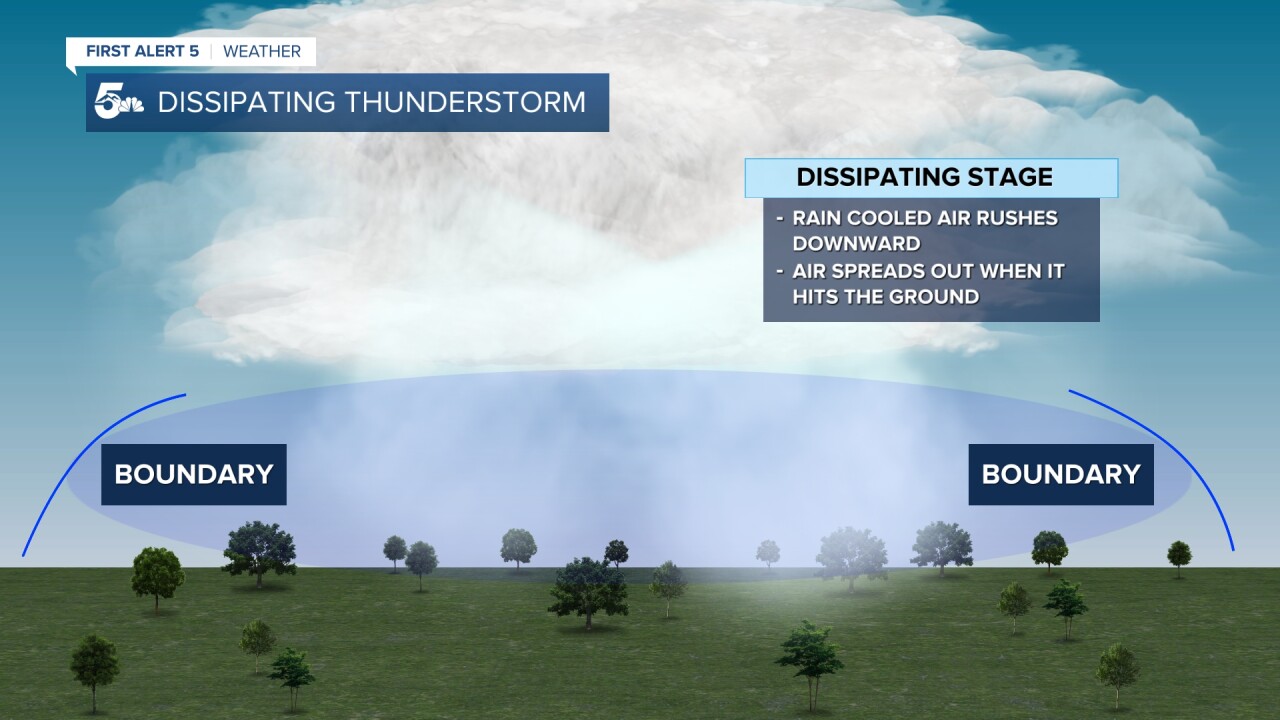You're outside by the pool on a sunny afternoon in Pueblo. You see a thin line of clouds pass above you. Thirty minutes later, your sunny day has been replaced with a roaring thunderstorm.
You've just seen an outflow boundary collision.

When a thunderstorm begins to collapse, rain-cooled air rushes downward. When it hits the ground, this air spreads out. The storm typically produces one main boundary that moves away quickly, but strong storms often form when two or more boundaries collide.
A recent outflow boundary collision in late June showed this phenomenon in action. Radar initially showed nothing other than two narrow lines — two outflow boundaries. Just 30 minutes later, a severe thunderstorm with quarter-sized hail and 60 mile per hour wind gusts had formed.

Here's what happened: When boundaries collide, there's a crash in the sky.

That crash contains thousands to millions of times more energy than a 30-minute professional fireworks show, depending on their size.

The boundaries also change the wind pattern. If one boundary is moving north and the other is moving east, when they collide the air spins around like a top. The combination of intense lift and a spin in the wind leads to sudden strong thunderstorms.
You can spot an outflow boundary in two ways. On radar it will look like a small line moving quickly and often in a direction different to any other storms you see on the screen. If you're outside, you'll see a narrow line of clouds. It'll be several miles long but only as wide as a couple of blocks.
Outflow boundaries are one of the most common ways for southern Colorado to get severe storms during summer. So they're important to pay attention to when I mention them on air.
This story was reported on-air by a journalist and has been converted to this platform with the assistance of AI. Our editorial team verifies all reporting on all platforms for fairness and accuracy.
____
Have a question or story idea you would like the First Alert 5 Weather team to consider? Email: weather@koaa.com
Watch KOAA News5 on your time, anytime with our free streaming app available for your Roku, FireTV, AppleTV and Android TV. Just search KOAA News5, download and start watching.



